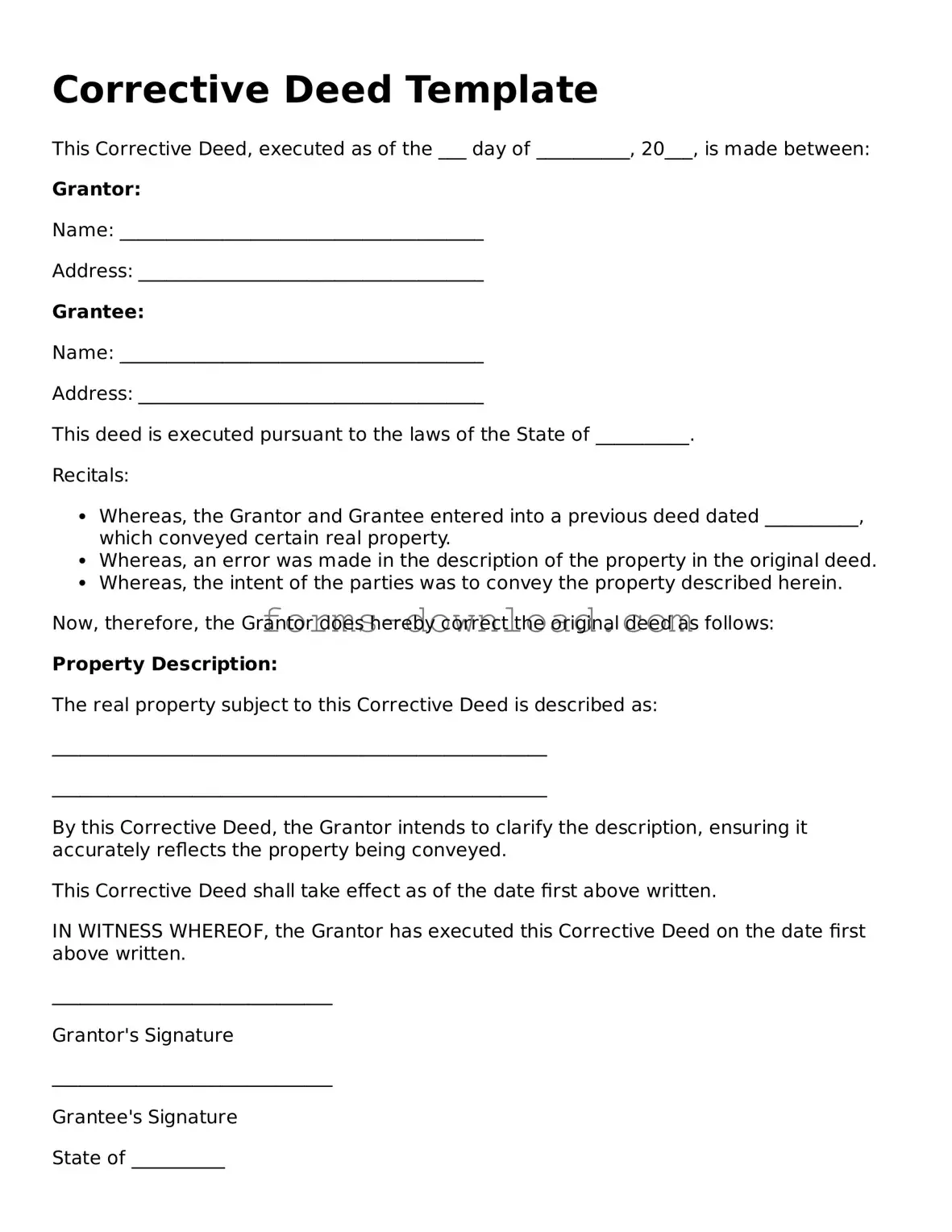Corrective Deed Template
This Corrective Deed, executed as of the ___ day of __________, 20___, is made between:
Grantor:
Name: _______________________________________
Address: _____________________________________
Grantee:
Name: _______________________________________
Address: _____________________________________
This deed is executed pursuant to the laws of the State of __________.
Recitals:
- Whereas, the Grantor and Grantee entered into a previous deed dated __________, which conveyed certain real property.
- Whereas, an error was made in the description of the property in the original deed.
- Whereas, the intent of the parties was to convey the property described herein.
Now, therefore, the Grantor does hereby correct the original deed as follows:
Property Description:
The real property subject to this Corrective Deed is described as:
_____________________________________________________
_____________________________________________________
By this Corrective Deed, the Grantor intends to clarify the description, ensuring it accurately reflects the property being conveyed.
This Corrective Deed shall take effect as of the date first above written.
IN WITNESS WHEREOF, the Grantor has executed this Corrective Deed on the date first above written.
______________________________
Grantor's Signature
______________________________
Grantee's Signature
State of __________
County of __________
On this ___ day of __________, 20___, before me, a Notary Public, personally appeared ________________________, known to me (or satisfactorily proven) to be the person whose name is subscribed to the within instrument, and acknowledged that he/she executed the same for the purposes therein contained.
In witness whereof, I hereunto set my hand and official seal.
______________________________
Notary Public
My commission expires: ________________
